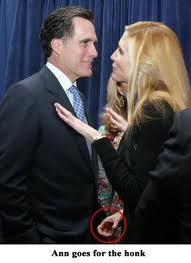 I plead guilty when people charge me with being a political junkie, which is why I can’t get my focus away from various election tidbits this week. On Election Day 2012, I blogged about my polling place and a few “ah-ha moments” I had while standing in line waiting to vote. The day after the election, I couldn’t help but indulge in the post-game analysis including fascinating data about the political fundraising landscape. There are definitely some lessons to be learned from those numbers.
I plead guilty when people charge me with being a political junkie, which is why I can’t get my focus away from various election tidbits this week. On Election Day 2012, I blogged about my polling place and a few “ah-ha moments” I had while standing in line waiting to vote. The day after the election, I couldn’t help but indulge in the post-game analysis including fascinating data about the political fundraising landscape. There are definitely some lessons to be learned from those numbers.
Here are a few interesting articles and websites that caught my attention:
- “Infographic: How Both Presidential Candidates Grossly Outspent Their Predecessors” by Fast Company
- “Obama outspent Romney in September” by The Washington Post
- “The 2012 Money Race: Compare the Candidates” by The New York Times
Here are just a few interesting observations:
- OMG, did you see how much money was raised on both sides of the political divide? I really think that non-profits need to stop saying that no one is donating because of the economy. Wow!
- Was anyone else surprised by where the political contributions came from when broken out state-by-state? I was shocked to learn that my home state of Illinois appears to be second only to California.
- There was an interesting contrast between the two candidates around the issue of “source of funds” with Obama’s largest source of funding coming from individuals donating $200 or less compared to Romney’s strength emanating from people donating $2,000 or more.
 What does this all mean for you and non-profit fundraising? Here are just a few casual observations:
What does this all mean for you and non-profit fundraising? Here are just a few casual observations:
Individual giving is the key to raising serious money!
Even with the Supreme Court’s Citizens United ruling, both campaigns kept their focus on raising money from individuals because just like with charitable giving individual giving dwarfs everything else. By some accounts, companies only accounted for 11% of the money raised by Super Pacs in this political cycle.
Huh?
This isn’t much more significant than the 5% charitable giving number that companies contribute to non-profits every year.
Am I missing something?
Renewed debate over big guys vs little guys?
A few weeks ago a board member said to me, “Erik, all we need to do is find one Warren Buffet or Bill Gates to serve on the board and our financial issues will be a thing of the past.”
As I look at Romney’s fundraising numbers, I think: “Maybe that board member wasn’t totally off-base.” When I look at Obama’ fundraising numbers, I think: “Wow, a small gift strategy might just work.”
When I get beyond the numbers and start reading editorials and letters to the editor, I can’t tell you how many people openly questioned how much influence big donors might wield over their candidate if they make it to the White House. All of that coverage got me thinking about the influence that big donors have over the non-profits they support.
I think this is a great boardroom discussion that should get translated into your agency’s annual resource development plan.
Staffing matters!
There was a lot of talk about “The Ground Game” on election night, and it showed up in the spending numbers. Did you notice the payroll number for each campaign? Here is the score: Obama $91.7 million to Romney $44.2 million. This wasn’t administrative dollars because that was broken out separately. This was money spent on something referred to “boots on the ground“.
Non-profit boards talk until they are blue in the face about the merits of paying for more fundraising staff or ponying up more salary to attract better staff.
Staffing and organizing field work made a difference in this election. Attracting top talent is a constant concern at for-profit corporations, and non-profit boards would be well-served to take a second look at these ideas.
What lessons learned did you walk away from Election 2012 for your non-profit agency? Did you have any “ah-ha moments” while watching news coverage or reading a news story? Please use the comment box below to share your thoughts.
Erik Anderson
Founder & President, The Healthy Non-Profit LLC
www.thehealthynonprofit.com
erik@thehealthynonprofit.com
http://twitter.com/#!/eanderson847
http://www.facebook.com/eanderson847
http://www.linkedin.com/in/erikanderson847




